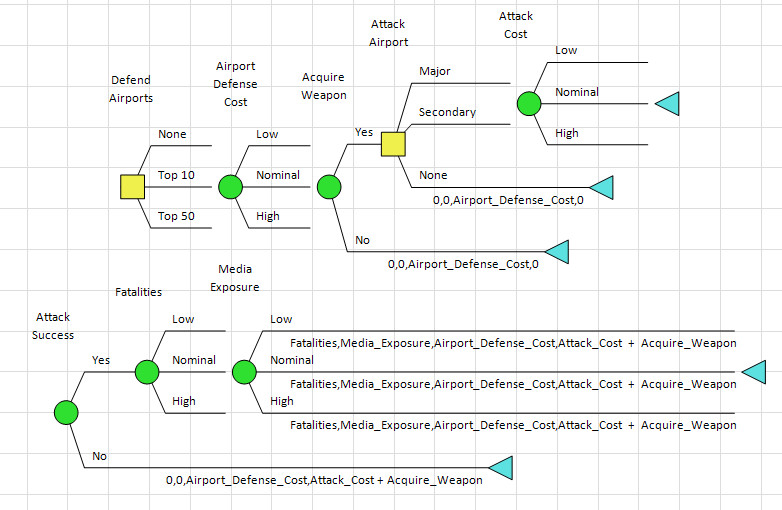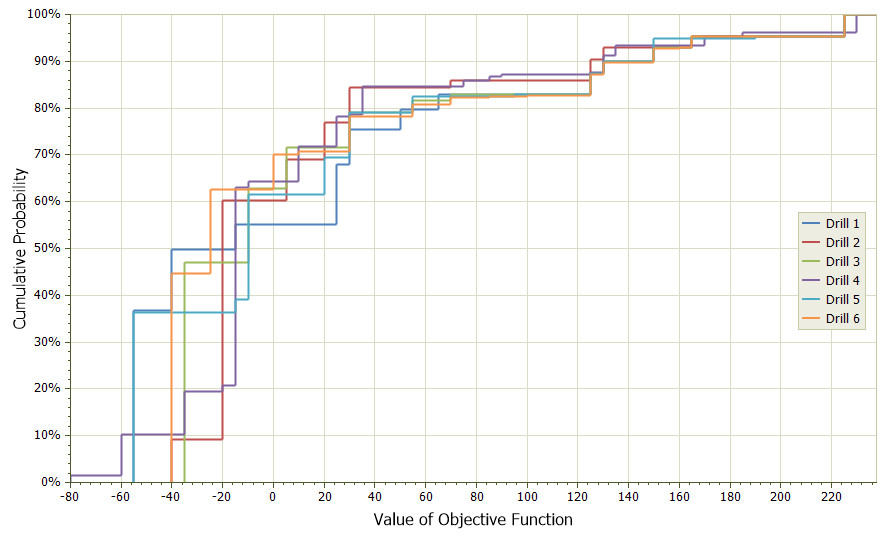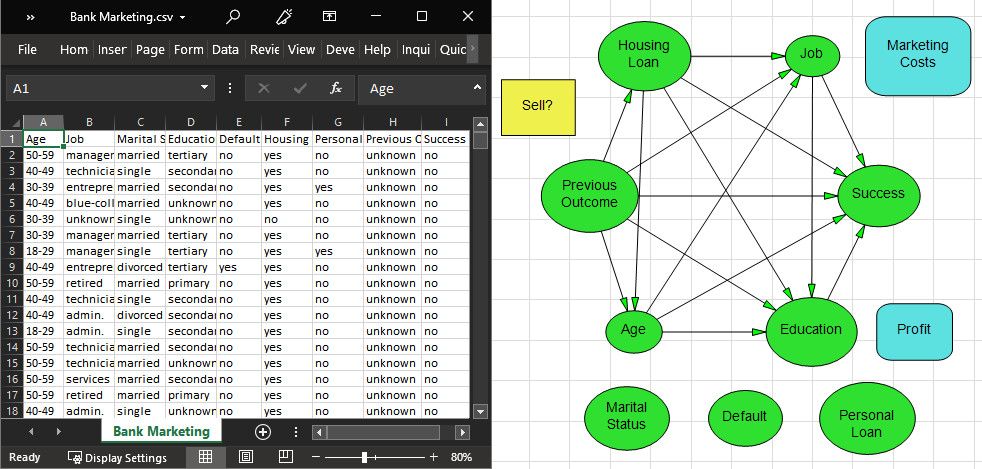DPL ENTERPRISE
DPL Enterprise contains all the features of DPL Professional plus key features to develop custom decision support systems and help you tackle complex, real-world decision problems with ease.
New Advanced Features:
Multiple Objective Functions

DPL Enterprise
Decision Tree Analyzing an Adversarial Multiple Objective Function Problem
Project managers are often confronted with decision-problems that include more than one objective/utility/criteria. We generally break these problems down into 3 levels of objective function modeling difficulty. (For more on this, see our post on the 3 levels of objective function complexity).
The most difficult decision problems are the ones in which there are multiple attributes and multiple, non-aligned decision makers with different objective functions. This can range from relatively friendly problems, such as joint venture partners with different incentives, to purely adversarial problems, such as counter-terrorism. There are a wide variety of these types of problem, which are really a blend of decision analysis and game theory, that can be efficiently handled using DPL Enterprise’s intuitive, graphical decision tree environment. The blog post linked above walks you through a real world adversarial problem in which DPL Enteprise is used to make a decision as to which, if any, airports to defend against attack in the US.
Allow Event Already Active

DPL Enterprise
Initial Decisions Alternative Chart for Sequential Drilling Decision
A common and challenging decision problem in the oil & gas industry is to decide how to explore an oil field. Typically there is a cluster of prospects, giving rise to a highly dependent set of uncertainties, according to their proximity and the geology of the area. For example, if you drill a well at one site and strike oil, it’s more likely that a nearby prospect will also have oil. If you drill a few “dry holes”, you’ll probably give up on the field rather than throw good money at potentially poor prospects. This makes intuitive sense, but until recently it was tough to model in a decision tree.
So we came up with a clever feature that allows analysts to model these types of sequential drilling problems with much greater ease. DPL Enterprise has a setting to “Allow event already active and halt with penalty value”. In other words DPL will stop evaluating a path in the tree (i.e., halt) if it encounters an event twice, and will apply a penalty value (typically a large negative number) at that point. That filters out paths where we try to e.g., drill Well 1 twice – paths that don’t make sense. For more on this feature see our blog post A New Feature that makes Sequential Drilling Decisions Easy
Estimate Probabilities from External Data

DPL Enterprise
Dataset and corresponding DPL Model Estimating Probabilities from Data
The probabilities for chance nodes in a DPL model can come from a variety of sources. When the uncertainty is a one-of-a-kind, truly unique event, and no structured data is available, probabilities are often obtained by direct subjective assessment by an expert in the subject matter. Influence Diagram from Bank Marketing Dataset
When structured data (i.e., “big data”) is available, DPL can employ it’s “Estimate Probabilities from Data” capabilities in order to infer probabilities and probabilistic relationships (i.e., influence Arcs in the Influence Diagram, see image above) for a data set consisting of a number of outcome observations (rows) for two or more uncertain events (columns). Pairing classic “data mining” tools and processes with DPL’s intuitive Decision Tree/Influence Diagram modeling interface allows users the flexibility to be pragmatic with their analyses. See our blog post Moving from Analyzing Datasets to Decisions in DPL to see how this plays out in a “real-world” case.
Other features include but aren’t limited to:
Database links
Do you have a corporate repository for project data, cost data, or other key data inputs? Use database links to populate your DPL models so you can ensure quality and consistency across projects.
DPL User Function Libraries
Extend the functionality of DPL by creating a Windows DLL with functions to be called from your DPL models. A DPL DLL can also serve as a way to interface DPL with other programs, such as software performing detailed calculations for your specific industry.
Automation API
Automate DPL via an application programming interface in order to embed it in a decision system with a custom interface.
Excel macros from DPL
Easily run Excel macros when a spreadsheet is recalculated for certain value models.
Parallel Endpoint Recording
Divide and conquer by running a large model on several different machines at once.
Multiple Expert Aggregation
Easily aggregate the critical opinions and assessments of multiple experts in a mathematically sound way.